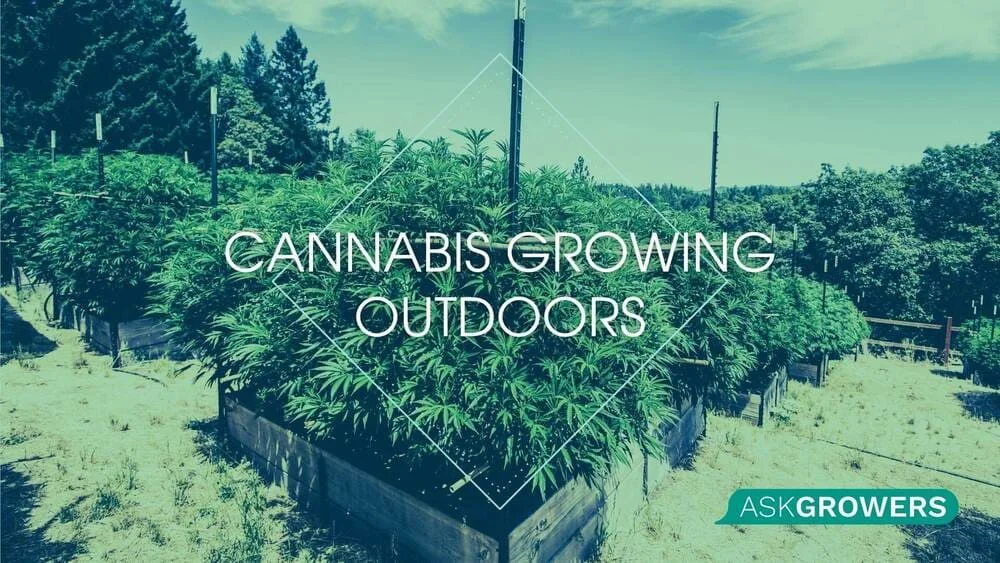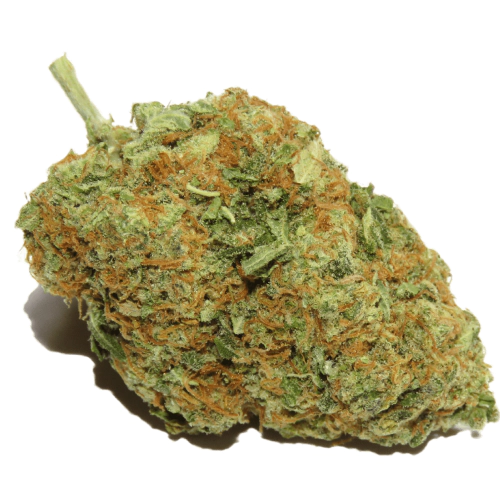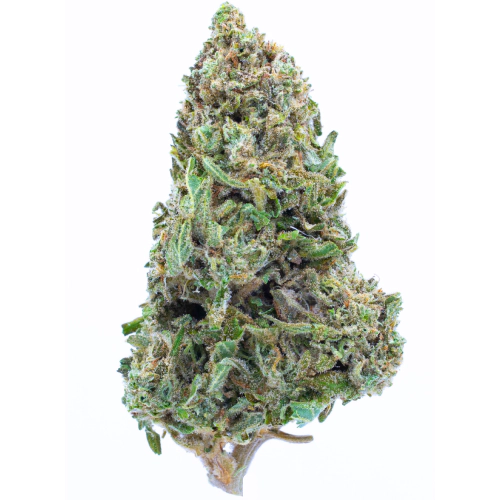As soon as you decide to cultivate weed for your personal use, it’s time to choose the method of growing it. You have three options: getting up an indoor garden, a greenhouse, and letting it grow outdoors.
Each method has its pros and cons, but if you’re a newbie to this practice and just want to give it a try, we recommend growing weed outdoors. It’s the simplest and the most cost-effective way to get a couple of buds for yourself. Here’s our detailed guide on growing marijuana outdoors for beginners.
Why Grow Your Weed Outdoors?
The practice of growing marijuana plants outdoors is beneficial in many ways.
- You may rely on the forces of Mother Nature, which will give your plants enough daylight and water to develop and thrive.
- Your financial input is minimal, limited to the purchase of seeds and proper irrigation and fertilization (if needed).
- The plants will grow outside your house, not requiring any special treatment inside the premises.
- You can effectively combine growing your weed with other seasonal veggies, thus enjoying the process and spending zero extra time and effort to get the expected harvest.
The initial question you might ask yourself before planting anything is, “when to start growing marijuana outdoors?” You might be surprised by the simplicity of the answer; weed thrives exactly during the same period as you would grow any other outdoor vegetables, like tomatoes, potatoes, peppers, and the like.
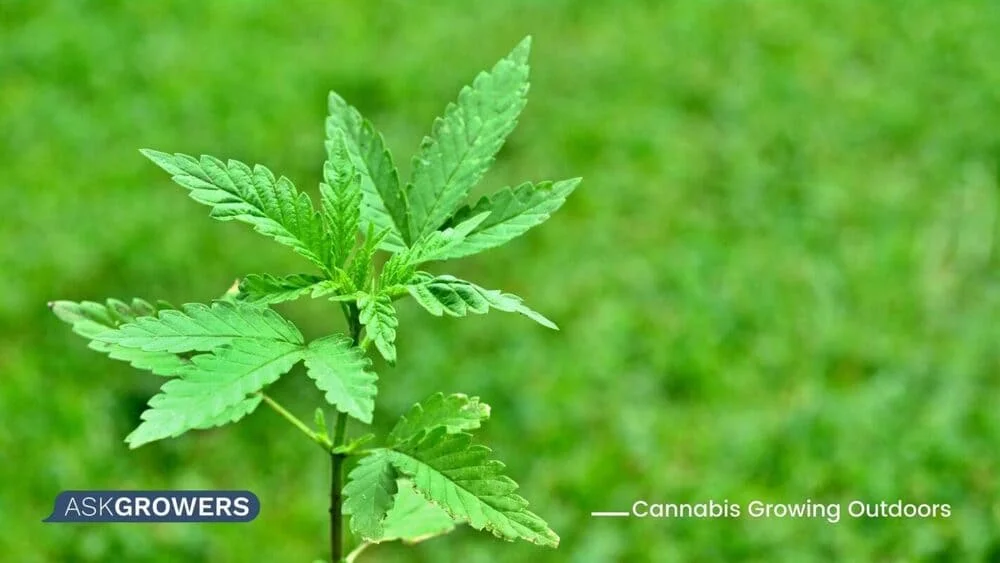
It generally takes 3-4 months for the plant to develop from seeds into bud-containing bushes. Thus, planting them in May will yield you a rich harvest by September. It’s essential to keep the seasonable temperatures in your location in mind, as cannabis thrives at 65-850F. Anything lower or higher than that can kill the plant and undermine your effort.
Key Points to Consider
Now let’s dig deeper into how to grow marijuana outdoors. Though cannabis is okay with growing outdoors, some environmental factors can hinder the harvest or cause hermaphroditism in your plants. Thus, it’s essential to choose the location for your plants thoroughly, with respect to what weed likes.
Location
The primary consideration for planning cannabis growing outdoors is where to put your plants. Here are the major rules:
- Weed loves sunlight, so it shouldn’t be grown in a shadow. Before sowing the seeds, make sure that this spot is well-lit during the daytime, with no trees or the shadow of your house covering it for most of the day.
- Cannabis plants don’t like strong winds; placing them in the air leak will likely ruin your harvest, kill the plants, or hinder their proper development.
- The optimal temperature for weed growing is between 65 and 850F, so ensure you time the seeding correctly. The soil should be warm enough when you sow the seeds; otherwise, you will see no springs.
Soil
Another vital contributor to successful weed growth is the soil into which you plant it. Soil composition differs in various locations, but clay, sand, and silt are its primary components. The latter is what any plants love, while clay and sand have their cons for growing, and farmers have to address them.
For instance, clay is very bad at drainage, causing water spots to stay in the soil and resulting in excessive humidity. As a result, mold and root disease can emerge, causing the weed plants to rot. Sand-dominated soil is excellent drainage, but it doesn’t keep the fertilizers well enough to provide proper nourishing for your plants. Thus, you need to take care of regular watering and fertilization if your soil has much sand in it.
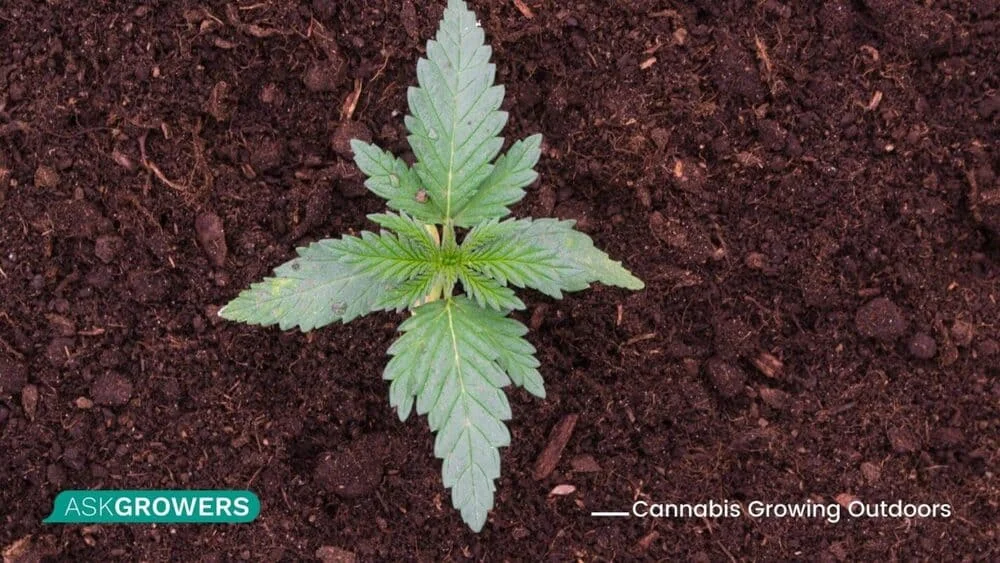
The best way to grow cannabis outdoors is to enhance the soil you have with compost and additional silt so that it becomes more fertile and contains everything your plant needs to thrive. You can arrange a simple irrigation system and add fertilizers right to it, ensuring that your plants get the water and nutrients they need at the right time.
Watering and Fertilizing Your Weed: Pro Tips
If you think, “what concerns are there for growing cannabis outdoors?” it’s probably the watering and fertilization schedule you should consider. Here are some pro tips from experienced growers that will help you preserve the yield and grow your weed without hassle.
- Make sure you choose a location for your bushes with proper regard to safety and legality. First, state laws prohibit growing weed out in the open in most locations. Second, you surely don’t want to have your harvest stolen one night. Thus, it’s better to conceal the weed plants somewhere in the middle of your garden and have a strong fence for protection.
- Choose a place where you can provide your plants with substantial space for unrestrained growing. Plants should be placed 3-5 feet apart.
- If your soil is not that good, don’t mess up with drainage and irrigation systems. A cheaper variant may be planting your weed in containers.
- Control the pH of your soil. Ideal conditions for weed growth presuppose an acidity of 5.5-6.5.
- Once your plants grow too high or wide, you can use stakes for support. Tie one stake to the central stem to keep the plant growing without breaking under its own weight.
Discover the Best Seeds for growing outdoors
Conclusion
Now you have a full guide on how to grow weed outdoors step by step. Use these tips and grow a rich harvest for long autumn and winter evenings. Having a joint with the weed you grew, collected, and dried with care is an unparalleled experience, so try yourself in the farmer’s role to get the best weed in the neighborhood.
